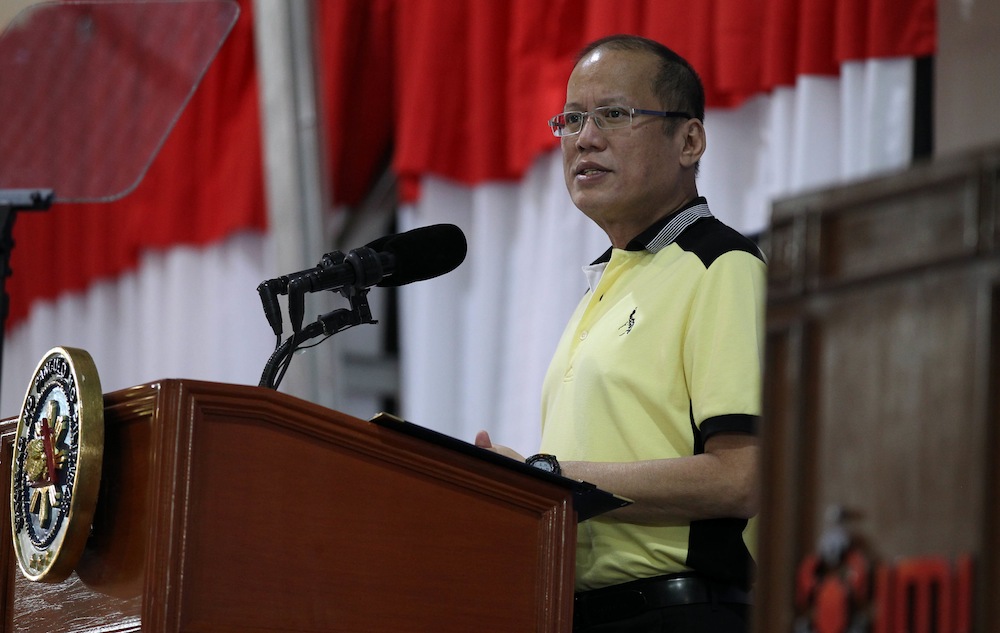SUMMARY
This is AI generated summarization, which may have errors. For context, always refer to the full article.

MANILA, Philippines – Two years before the 2016 elections, President Benigno Aquino III has a piece of advice to voters: choose a leader who will continue his administration’s reforms.
“My request to you: If you believe that what we are doing is right, if you don’t want what we’ve started on the straight and narrow path to go to waste, let’s pick a leader who will continue and further improve on the reforms we’ve made,” he said on Thursday, May 1.
“Let’s pick someone deserving so that the transformations we want in our society will be permanent and wide-reaching.”
Aquino’s Labor Day speech in Laguna made it feel like campaign season again. He highlighted his administration’s successes before urging Filipinos to vote for someone who would sustain them. He even thanked the province for making him Number One in the 2010 polls even if he is not from Laguna.
Interestingly, Laguna is the fifth vote-richest province in the country with 1.5 million voters.
Aquino made the call just two days after Rappler released a report on a Pulse Asia survey, showing Vice-President Jejomar Binay as the overwhelming choice for president with 40% of respondents naming him as their first choice if elections were held today.
Interior Secretary Manuel “Mar” Roxas II, the likely standard-bearer of the ruling Liberal Party in 2016, obtained 6% and was ranked number 5 in the survey.
Booming electronics industry
On Labor Day, Aquino visited various manufacturing facilities in Laguna, where the industry’s revitalization has been most evident in recent years.
Among the achievements emphasized by the President during his speech were related to improvements in the manufacturing industry and job generation.
Aquino pointed to the success of the Technical Education and Skills Development Authority’s Training for Work Scholarship Program (TWSP). He said in 2013, 130 scholars trained at Testech Incororated, 113 of whom were hired.
The program also trained 100 scholars at Integrated Microelectronic Incorporated, and 400 at Alliance Mansols Incorporated, all of whom were employed.
The 3 companies are from the electronics and semiconductor industry, all of which Aquino visited.
“You see, we just did what was right. We talked to investors honestly, and the result: 91.43% employment rate at the semiconductors and electronic industry – just a little more and we will reach 100%,” he said.
“This is just proof that when Filipinos are given the right chances, they will truly shine, which contributes to their personal and the country’s success.”
The President also said that because of the program’s success, the scholars under the TWSP for the semiconductor and electronics industries have increased in 2014. He believed this is fitting, since the industry itself is growing, as is the need for more employees.
Other reforms planned by the Aquino administration include an electronic industry roadmap for the country which aims to improve product innovation, strengthening the industry’s manufacturing capability, and finding solutions to the current problems of the electronics industry.
“This is all part of a strategy to make permanent the progress we all seek,” he said.
Aquino also vowed to continue focusing on the labor sector, which he said has significant effects on growing the economy and reducing poverty. In 2013, Aquino said manufacturing’s contribution to the national economy increased by 22.8%.
A large portion of that was due to the electronics industry, he said, with 40.4% of the country’s exports worth $53.98 billion coming from the industry. He also said electronics exports accounted for about 18.6% of the country’s gross domestic product (GDP).
“All our projects in the straight and narrow path – from agriculture, to infrastructure, to tourism, even public service – every initiative of ours in the past years, according to NEDA (National Economic and Development Authority), will decrease the number of Filipinos under the poverty line by 3 percentage points from the first semester of 2012, towards 2013,” he said.
The 3 percentage points translate to 2.5 million Filipinos. – Rappler.com
Add a comment
How does this make you feel?
There are no comments yet. Add your comment to start the conversation.